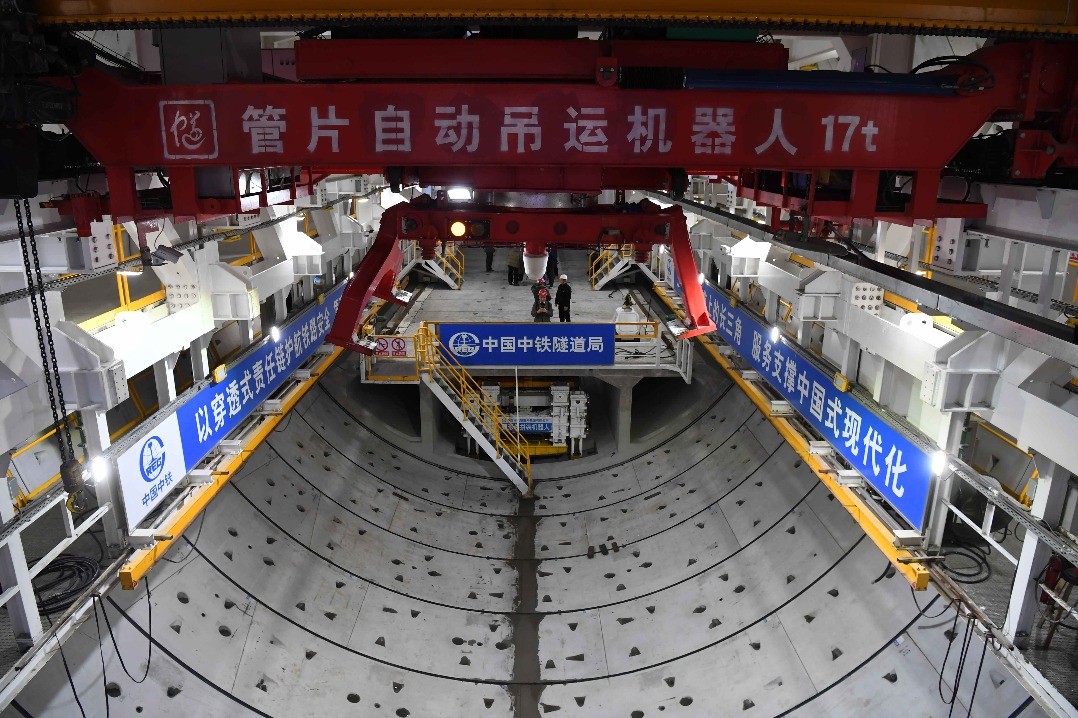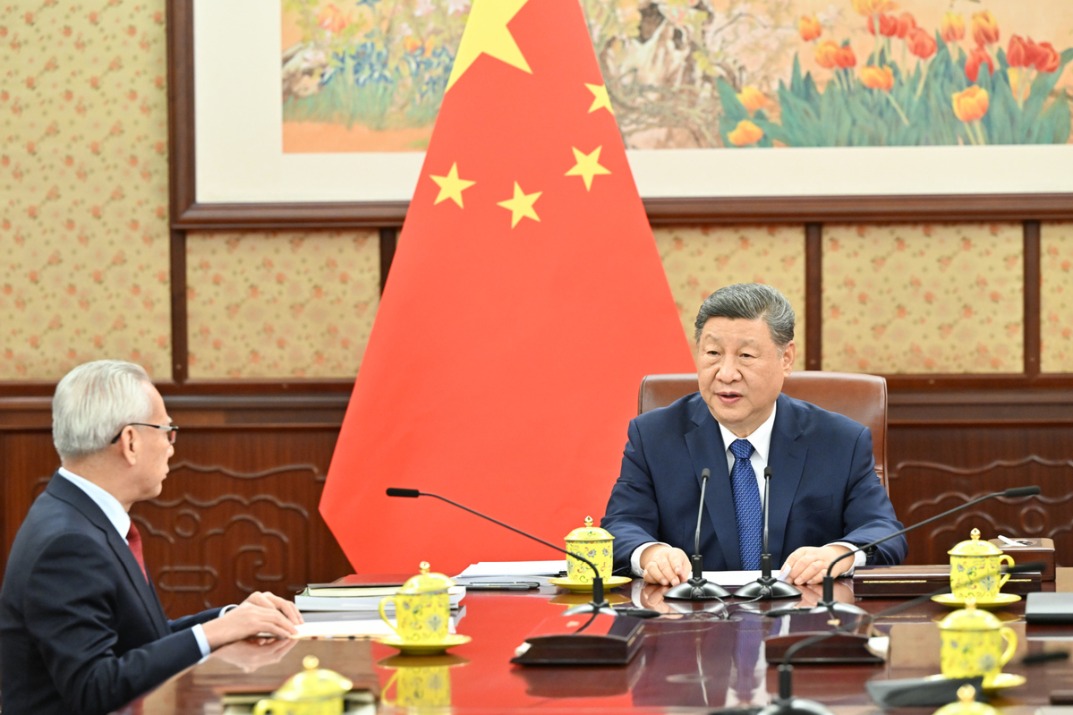Breakthrough reached in propylene production

Researchers in northern China have developed a new catalyst technology that could significantly reduce costs and carbon emissions in the production of propylene, a key raw material for plastics, synthetic rubber and fibers.
The team from Tianjin University reported that it achieved almost complete utilization of precious metal atoms in propylene catalysts — a long-standing challenge for the chemical industry. Their findings were published in the journal Science on Friday.
Propylene is among the world's most widely used chemical feedstocks, found in everyday products ranging from medical equipment and textiles to agricultural materials. While catalysts are essential in its production, improving their efficiency and cost-effectiveness remains a major global challenge, said Gong Jinlong, who leads the research team and is a faculty member at Tianjin University.
"We have developed an internationally pioneering technology that can effectively extract precious metal atoms hidden deep inside catalyst particles to the surface, thereby achieving full utilization of these atoms, significantly reducing production costs and improving propylene generation efficiency," said Sun Guodong, co-first author of the research paper.
Sun explained that precious metals such as gold, silver, platinum and palladium are rare and costly to extract. Platinum and palladium are mainly used in catalysts and medical devices. Platinum, valued for its stability and safety, serves as a catalyst in about two-thirds of the "on-purpose" propylene production from propane.
However, platinum atoms often clump together inside catalyst particles "like actors hiding behind the scenes," unable to fully play their catalytic role, Sun said. This leads to low efficiency and high costs.
"In 2024, the global usage of precious metals in catalysts reached nearly 200 billion yuan ($28 billion)," he said.
To address this, the Tianjin University team developed a new strategy called "atomic extraction "after more than a decade of research. The method involves adding tin to the surface of a platinum-copper alloy. Tin acts "like a magnet", pulling nearly all the buried platinum atoms to the surface of the catalyst particles.
Gong explained that the process first disperses platinum atoms on copper, breaking up the aggregates into isolated atoms. Then, the "magnetic-like" effect of the tin draws the platinum atoms outward.
"Due to its large atomic radius, tin cannot enter the interior of the copper particles, but it has a strong attraction to platinum atoms. Through strong interactions, tin can completely pull the internal platinum atoms to the catalyst surface," Gong said. "With this strategy, the exposure ratio of platinum on the surface increases from about 30 percent to nearly 100 percent."
He added that earlier experiments in 2018 showed copper could improve the dispersion of platinum atoms, paving the way for the new approach.
In propylene production, the new catalyst requires only one-tenth of the platinum used in the most advanced existing catalysts, while offering even better performance. Compared with traditional catalysts, the new method reduces precious metal consumption by 90 percent — meaning catalyst costs can also fall by 90 percent.
"This marks a major breakthrough in China's catalytic industry, successfully advancing toward a new paradigm of full atomic utilization for low-carbon development," Gong said.
The breakthrough not only offers a revolutionary catalyst design for propylene production, but also holds promise for developing other precious metal catalysts. It could greatly reduce industry reliance on scarce metals such as platinum and palladium, supporting a shift toward low-cost, resource-efficient and high-performance chemical production.
Gong noted that traditional propylene production has a low conversion rate and that carbon residues often build up on catalyst surfaces, reducing efficiency. Air must then be introduced to burn off the carbon deposits, releasing large amounts of carbon dioxide and wasting carbon resources. The new technology improves propylene generation efficiency and minimizes carbon buildup, helping achieve low-carbon production.
The technology remains at the laboratory stage and is expected to take five to 10 years to reach large-scale industrial application.
"This research not only achieves nearly complete utilization of precious metal atoms, but also provides new ideas for improving atomic efficiency in catalyst design," Gong said.
Wang Xiaojing contributed to this story.
Today's Top News
- Crossing a milestone in the journey called Sinology
- China-Russia media forum held in Beijing
- Where mobility will drive China and the West
- HK community strongly supports Lai's conviction
- Japan paying high price for PM's rhetoric
- Japan's move to mislead public firmly opposed






























